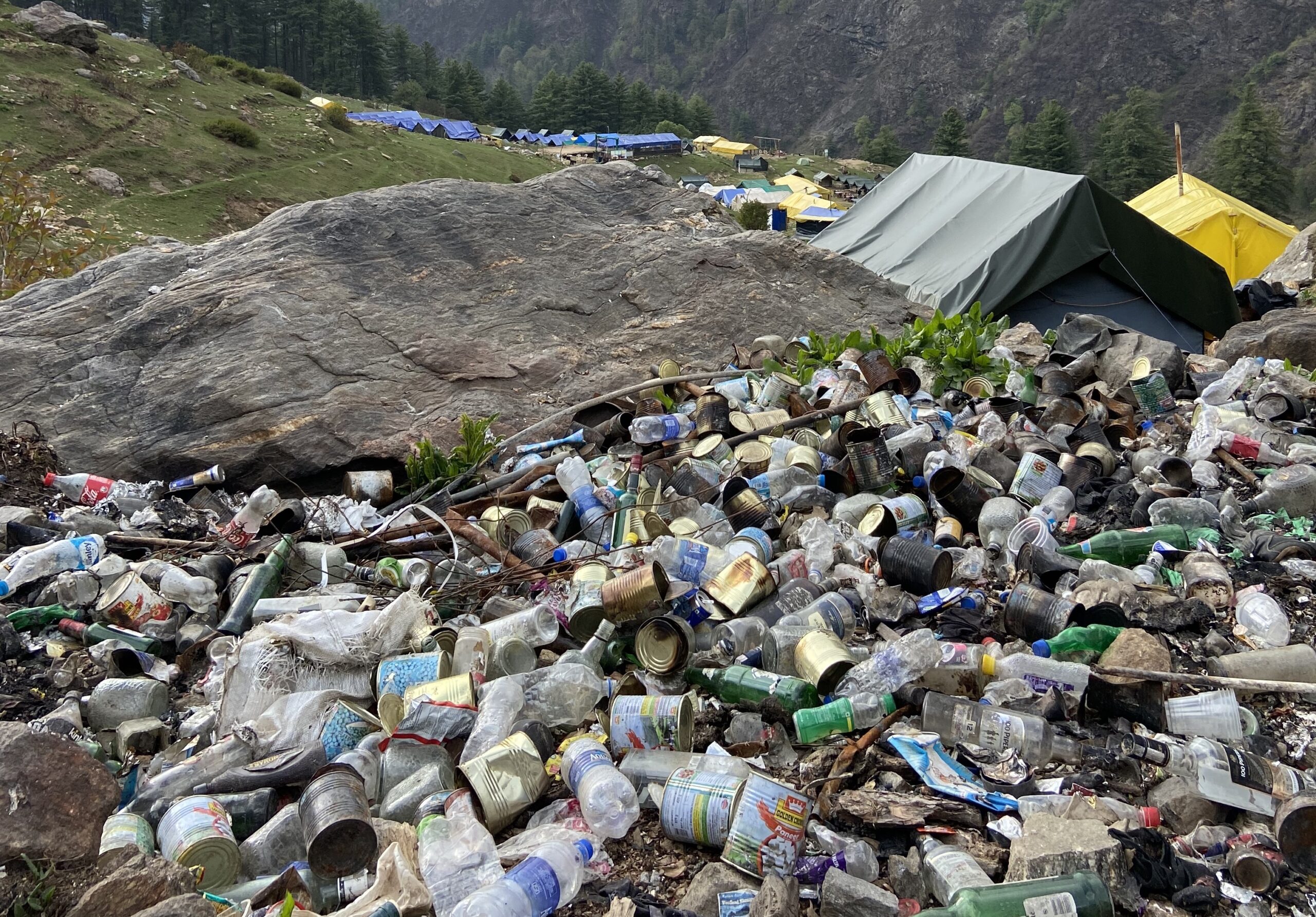When people think of the Himalayas, they think of a beautiful place with snow-topped mountains, winding streams, and green fields with coniferous trees. The Himalayas, which are in six countries and cover 595,000 square kilometers, are a great place for tourists and mountaineers. A big part of the income here is based on tourism. It’s a great place for serious hikers and mountaineers to go, and it’s also a nice break from the hot summers in the area for local tourists.
WHAT DO YOU SEE AS THE PROBLEMS?
As the number of cities and tourists in the Himalayas grows, there is rising worry about how to handle solid waste in a sustainable way. Littering along paths in tourist areas and dumping trash openly in valleys and streams has become common, which is bad for public health and the environment. Some of the things that make it harder to collect and safely dispose of trash in the mountains than in the urban lowlands are the harsh weather, the mountains’ isolation, the small amount of land, and the weak infrastructure.
Some of the things that make it harder to collect and safely dispose of trash in the mountains are the harsh environment, the mountains’ remoteness, the small amount of land that can help in waste treatment and disposal, and the weak infrastructure.
Another big problem is that there isn’t a lot of information about how much and what kinds of waste are there in the settlements that dot the Himalayan environment. The unique geography and climate of the Himalayas, which includes urban hill towns such as Shimla, Spiti, Kufri, hatu peak many more areas, protected areas, and high-altitude and remote villages on trekking paths, means that solid waste management (SWM) needs to be done in a special way.
Together with the Korean Green Growth Trust Fund (KGGTF), the World Bank started a regional study to fill in the gaps in data and figure out what is going on with SWM in the hilly parts of India, Nepal, and Pakistan. The study also gives technical suggestions for promoting sustainable SWM in the Himalayan region by helping these countries use a landscape management method that works well locally and in the region as a whole.
What We Learned
Some of the most important things learned from the data collected in the three countries’ mountain areas are:
- The amount of municipal solid waste (MSW) depends on how urbanized a place is, how far away it is, how many tourists visit, and how much money families in mountain settlements have.
- Writing for MSW: Mixed waste from places like homes, shops, and hotels is mostly made up of biodegradable trash. Mixed trash in places where a lot of tourists go is mostly made up of plastic.
Read Also: 10 Amazing Things to Do on Your Next Holiday
- Getting rid of and collecting MSW: Accessibility is a big problem because of the rough terrain, remoteness, and harsh temperature, and only a small number of homes have door-to-door trash pickup. India and Pakistan almost never separate their MSW, with the exception of Nepal.
- MSW disposal: Even though there are collecting services in some places, people are throwing trash in drains, ravines, valleys, streams, or rivers without regard.
- Willingness to pay: Most households are ready to pay for good waste management services.
- Households think that waste management is important for the health of the earth, but they don’t know the proper way to do so.
The Next Steps
SWM problems leave a negative impact on Human health and the health of ecosystems. At the same time, they have a huge effect on the mountain tourist industry. The tourist industry also has an effect on the SWM industry, especially in mountainous areas. Mishandling trash, like leaving it in the open or putting it in landfills that aren’t clean, not only ruins beautiful mountain scenery, but it can also damage the land, pollute the air, and make mountain slopes less stable, among other things. When people throw trash into rivers and streams, it often ends up in places further downstream and then in the seas.
When people throw trash into rivers and streams, it often ends up in places further downstream and then in the seas.
An organized, step-by-step plan to improve SWM services in the mountainous parts of India, Nepal, and Pakistan is one of the study’s most important suggestions. A multi-step process makes sure that the government and other partners can handle all of the moving parts in the waste management cycle. This includes institutional ability, policy-making and enforcement, changing the behavior of waste producers, and improving technologies.
